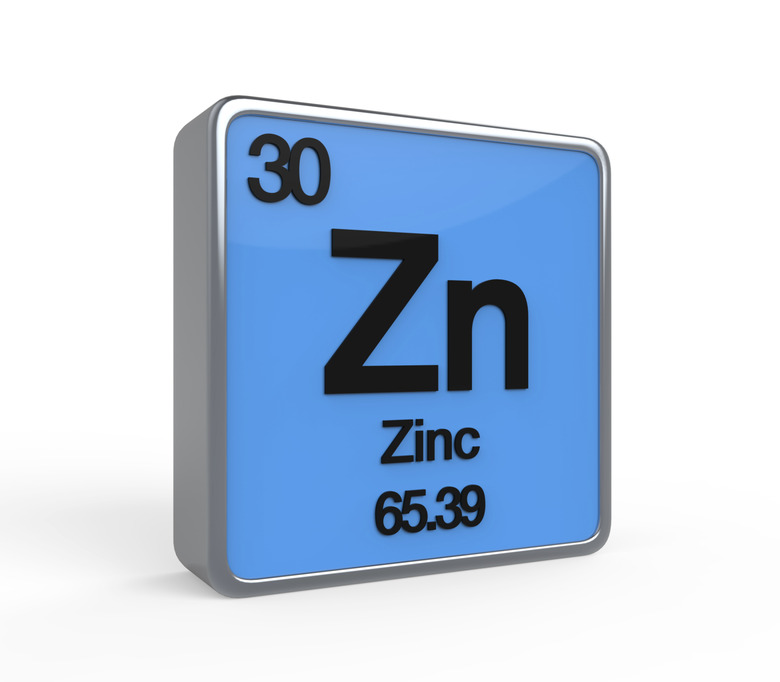How To Calculate Atomic Mass
Each element on the periodic table has an atomic mass — an approximation of the mass of a single atom of that element. Because atoms are so small, a specific unit is used to measure the mass of small quantities of atoms. Very large quantities of atoms are needed to equal very small units, such as grams and ounces.
Where to Locate an Element's Atomic Mass
Where to Locate an Element's Atomic Mass
You can locate the atomic mass of an element on the periodic table, which lists all known elements. The atomic mass is the number listed directly below the symbol for the element on the periodic table. Atomic mass is given in atomic mass units, or amu, which are used to measure very small quantities of mass. For instance, carbon — shown as "C" on the periodic table — has an atomic mass of 12.0107 atomic mass units. This means one carbon atom has a mass of about 12.0107 atomic mass units. This may vary, as one element, including carbon, may have different isotopes — forms of the element with different numbers of neutrons, and thus, different masses. The atomic mass shown on the periodic table is an average based on how common different isotopes are in relation to each other.
Finding the Atomic Mass Based on Atom Number
Finding the Atomic Mass Based on Atom Number
To find how much a certain number of atoms weigh in atomic mass units, multiply the atomic mass by the number of atoms. Note you will usually be doing this for very large numbers of atoms, and will need a calculator. Say you're given a problem to find the mass of 6.7 x 10^4 carbon atoms. To find this, multiply 6.7 x 10^4 by the atomic mass: mass = 6.7 x 10^4 x 12.0107 atomic mass units = 8.047 x 10^5 atomic mass units
Find the Mass of a Mixture
Find the Mass of a Mixture
You might also be asked to find the mass of a mixture of two or three different elements. To do this, multiply the number of atoms of each separate element by that element's atomic mass, then add these masses together. Say you have 6.0 x 10^3 atoms of oxygen, and 1.2 x 10^4 atoms of hydrogen. Oxygen has an atomic mass of 15.9994 atomic mass units, hydrogen has an atomic mass of 1.00794 atomic mass units. Multiply each number of atoms by its respective atomic mass, and add them: mass of a compound = (6.0 x 10^3 x 15.9994 atomic mass units) + (1.2 x 10^4 x 1.00794 atomic mass units) = (9.6 x 10^4 atomic mass units) + (1.2 x 10^4 atomic mass units) = 10.8 x 10^4 atomic mass units
Converting Atomic Mass Units to Grams
Converting Atomic Mass Units to Grams
The gram is among the most common units of mass used in chemistry. Since atomic mass units are so small, it takes a vast number — 6.022 x 10^23 — to make up a single gram. This amount is called Avogadro's Number and is used as a constant in some calculations. To convert a quantity of atomic mass units into grams, you divide by Avogadro's Number. For example, if you have 7.45 x 10^17 nitrogen atoms, first multiply by the atomic mass, then divide by Avogadro's Number. The atomic mass of nitrogen is 14.00674 atomic mass units, so: mass = (7.45 x 10^17 x 14.00674 atomic mass units) / (6.022 x 10^23 atomic mass units/gram) = 1.73 x 10^-5 grams
Cite This Article
MLA
Zamboni, Jon. "How To Calculate Atomic Mass" sciencing.com, https://www.sciencing.com/calculate-atomic-mass-4516596/. 24 April 2017.
APA
Zamboni, Jon. (2017, April 24). How To Calculate Atomic Mass. sciencing.com. Retrieved from https://www.sciencing.com/calculate-atomic-mass-4516596/
Chicago
Zamboni, Jon. How To Calculate Atomic Mass last modified March 24, 2022. https://www.sciencing.com/calculate-atomic-mass-4516596/
